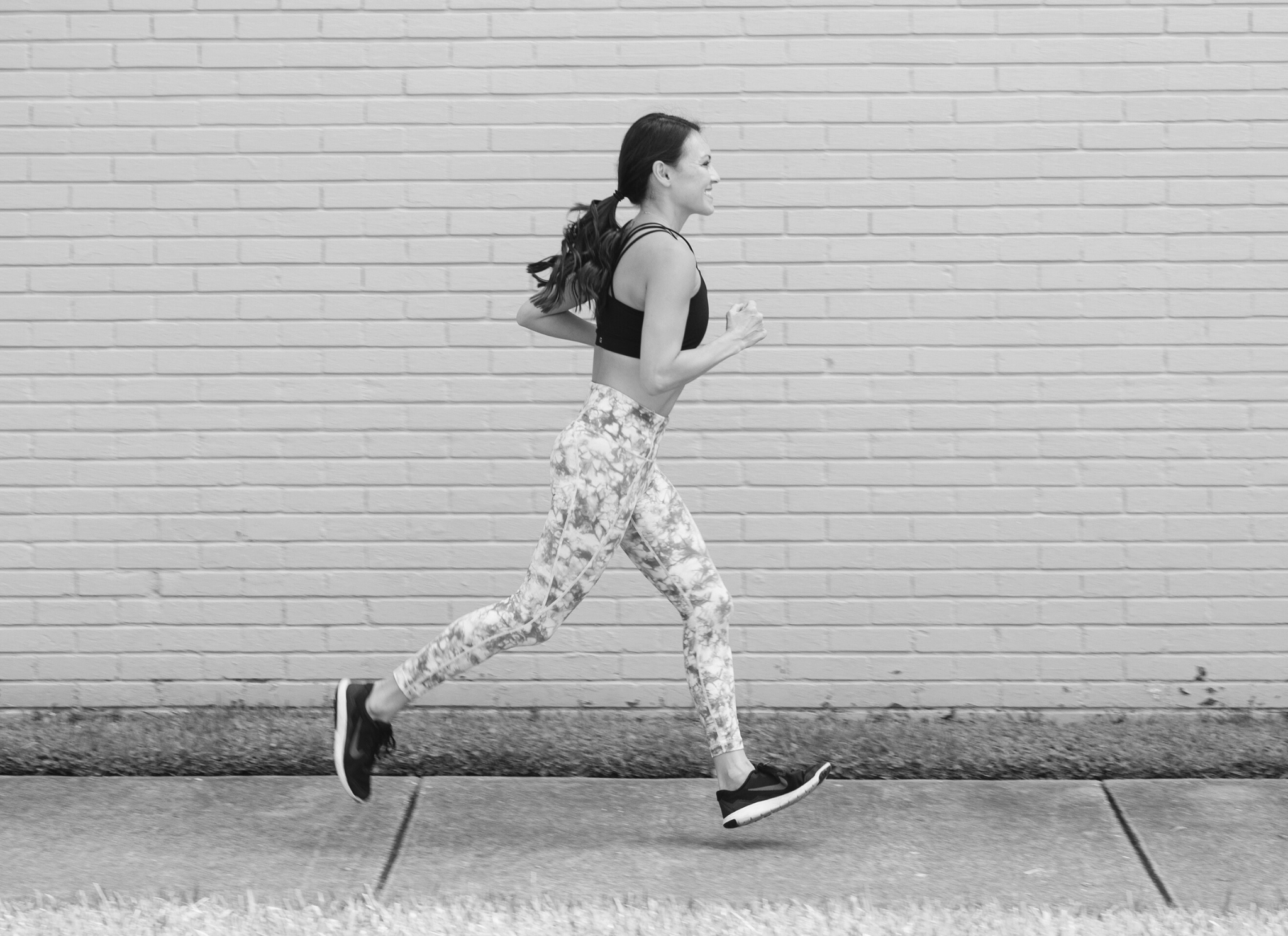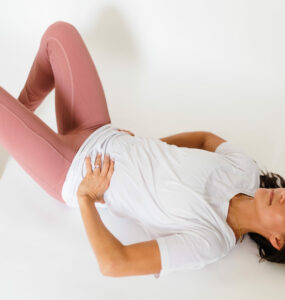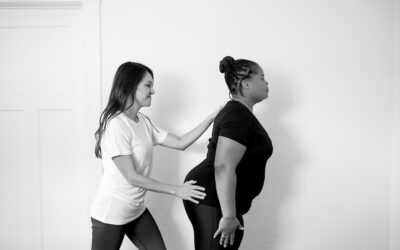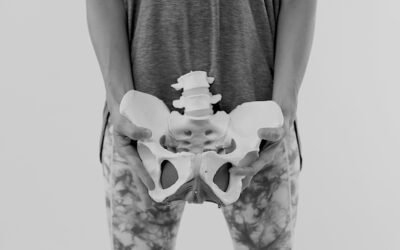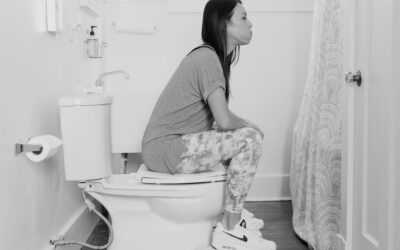When we think of urinary incontinence, we often picture newer moms or older ladies. Young, fit women often don’t come to mind when we look at a pack of pads.
But urinary incontinence is common in athletes—especially those with vaginas.
Research shows that up to half of female athletes experience some level of urinary leakage when doing their sport. It’s even more likely for those engaged in high-impact or high-intensity sports, like running or weightlifting.
If urinary incontinence is affecting your enjoyment of and participation in sports, it may mean your pelvic floor needs a little love. So let’s talk about that.
What is Stress Urinary Incontinence?
Urinary incontinence (UI) is any involuntary leakage of urine. The most common type of UI in women is stress urinary incontinence (SUI), which happens when pressure in the abdomen–like from a cough, sneeze, or laugh–causes urine to leak.
Various studies indicate about 30% of middle-aged women have SUI, and it’s common among female athletes, too. Even among high-school-aged athletes! That’s because without proper awareness and breathing techniques, high-impact sports can harm our pelvic floors.
Pelvic Floor 101
Especially for athletes, understanding the role of the pelvic floor is helpful for maintaining strength and function.
The pelvis is a ring of bones that’s connected in the front through the pubic symphysis and in the back through the sacroiliac joints (SI). Around this ring sit the muscles that support your internal organs, like the bladder, rectum, and reproductive organs.
Your pelvic floor muscles are partly responsible for all things peeing, pooping, sex, and childbirth. And much like other muscles in the body, they can weaken and stop doing what they’re supposed to be doing.
When the pelvic floor is in tip-top shape, it helps your inner core control any incoming pressure within the abdomen (like from that cough, sneeze, or laugh). When the muscles are either too weak or too tense, the pelvic floor has a tough time managing that pressure.
And here’s the thing: The abdominal pressure from exercise is far more significant and persistent than the pressure from a cough or sneeze. So it’s no wonder urinary incontinence in female athletes is so common!
How to Manage Urinary Incontinence
#1 Breathe.
Diaphragmatic breathing might be the answer to your pee problems. By breathing appropriately, especially during a workout, you can better control the intra-abdominal pressure that builds during your favorite activities.
To practice:
- Lie on your back with your knees bent.
- Put one hand on each side of your rib cage.
- Deeply inhale, inflating your ribcage, as if it’s opening up like an umbrella, then slowly exhale. Allow one breath to flow smoothly to the next and repeat for 10-20 breaths.
Also, be mindful of the effects of ground reaction force—that’s the pressure the ground exerts on your body when you move. In high-impact sports, the ground reaction force is significant, which increases pressure in your core. So during a workout, breathe out when you land. In fact, exhale with any exertion to decrease pressure on your pelvic floor and core.
#2 Eat well.
One study from Boston Children’s Hospital found that urinary incontinence in female athletes was more prevalent in those with low energy availability. In other words, when an athlete doesn’t take in enough calories to meet their body’s demands, they’re more likely to leak. So, eat well! Make sure you’re getting enough calories before and after your workouts.
#3 Strengthen your pelvic floor muscles.
Some athletes who are otherwise physically fit struggle with pelvic floor weakness. That’s because while athletes often pay attention to their core strength, they often neglect the deeper core, which includes the pelvic muscles. Even for elite athletes, pelvic floor exercises are a first line treatment for urinary incontinence.
Pelvic floor damage, childbirth recovery, medical conditions, hormonal factors, or injury are other reasons someone might have a strong core but a weak pelvic floor. If you experience incontinence during day-to-day activities, in addition to during sports, you likely need to work on your pelvic floor.
#4 Relax your pelvic floor.
Some people think they need to strengthen their pelvic floor when what they really need is relaxation. A tense pelvic floor can be just as problematic as one that doesn’t activate at all! That’s because a chronically activated pelvic floor leads to muscle fatigue. When these muscles are overworked, they can’t respond appropriately to a sudden stressor like a cough or sneeze—or landing a pole vault. Hence urinary leakage.
#5 Balance your inner core.
SUI can indicate a “mismatch” between the pelvic floor and core. Your pelvic floor muscles might be strong and functional, but if your core isn’t strong enough to keep that intra-abdominal pressure in check, you’re more likely to leak.
#6 Scale it back.
Your pelvic floor might be just strong enough to keep the pee in during day-to-day activities. But then when you hit the gym, you might be placing too many demands on your pelvic floor and core—which is why you may only experience SUI while exercising.
So, scale it back. Don’t set any new PRs for a bit and focus on gradually strengthening your pelvic floor and core before returning to those higher-intensity workouts.
Get back on track.
Don’t let urinary incontinence affect your quality of life by keeping you from the sports you love!
The V-Hive Membership gives you access to online, on-demand workouts for your pelvic floor and core. Whether you need to strengthen, relax, or both, the V-Hive has you covered. Get your first week of V-Hive membership for free.
Sources & Further Reading
Joseph C, Srivastava K, Ochuba O, et al. (September 15, 2021) Stress Urinary Incontinence Among Young Nulliparous Female Athletes. Cureus 13(9): e17986. doi:10.7759/cureus.17986
Pires T, Pires P, Moreira H, Viana R. Prevalence of Urinary Incontinence in High-Impact Sport Athletes: A Systematic Review and Meta-Analysis. J Hum Kinet. 2020;73:279-288. Published 2020 Jul 21. doi:10.2478/hukin-2020-0008
Rodríguez-López, E.S., Acevedo-Gómez, M.B., Romero-Franco, N. et al. Urinary Incontinence Among Elite Track and Field Athletes According to Their Event Specialization: A Cross-Sectional Study. Sports Med – Open 8, 78 (2022). https://doi.org/10.1186/s40798-022-00468-1

